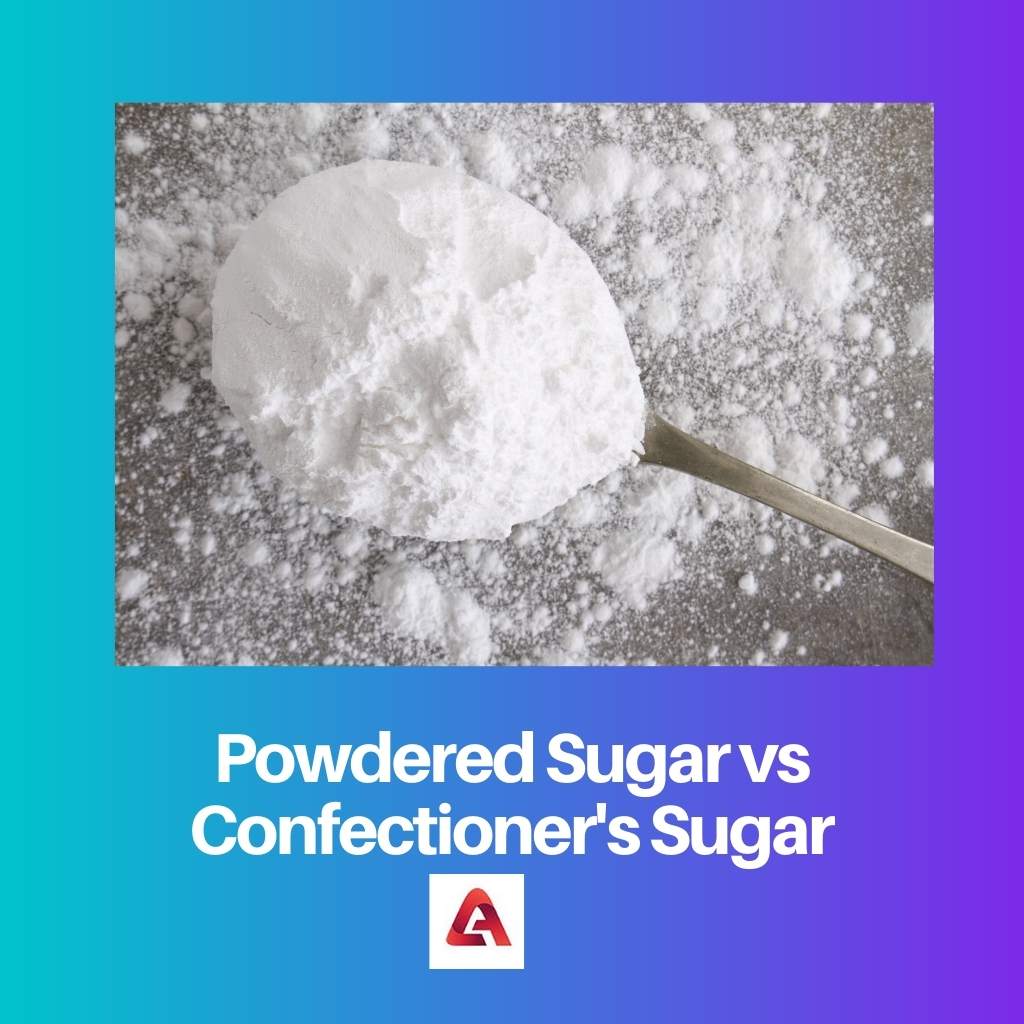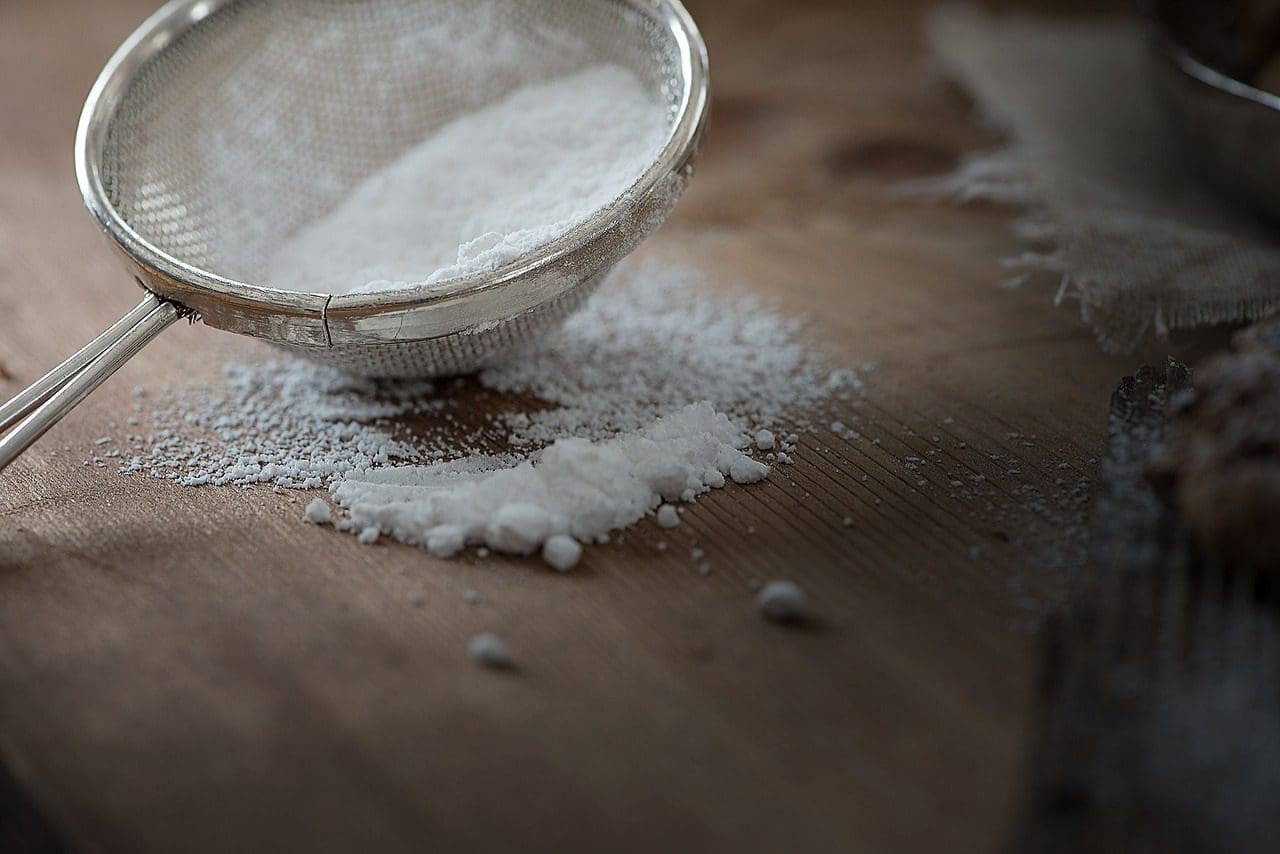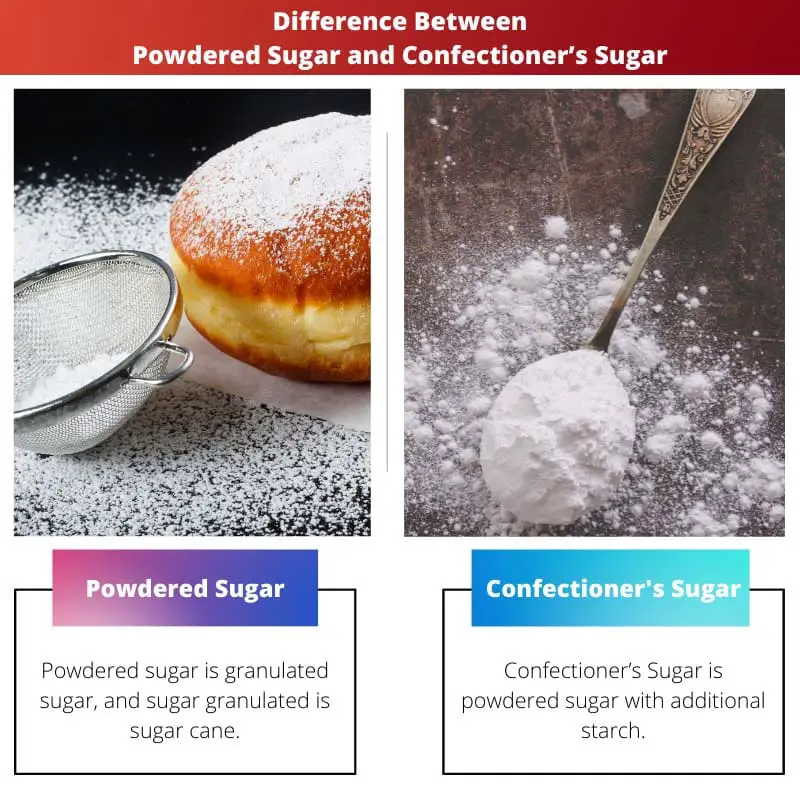Nearly everyone has a sweet tooth. Most children love tasty things like candies, chocolates, gums, etc. Whenever we eat something delicious, it tastes like paradise and bliss.
As you say, eat chocolates when they’re sad. Thanks to sugar, any dish can be sweetened anywhere, every day.
In reality, sugar cane is harvested. It has different varieties, and two of them are mentioned in this article. These are sugar powdered and sugar candy made. Let’s have all of us on board.
Some people love powdered sugar sprinkled on French toast, pancakes, and Belgian waffles. By contrast, white sugars normally sweeten your preferred foods and beverages, such as coffee, juices, etc.
Key Takeaways
- Powdered sugar and confectioners sugar are the same product, also known as icing sugar or 10X sugar.
- Powdered sugar or confectioners sugar is a finely ground sugar mixed with cornstarch to prevent caking and is commonly used in baking, frosting, and decorating.
- Powdered or confectioners sugar is also used in many other applications, such as sweetening beverages, dusting desserts, and making fondant.
Powdered Sugar vs Confectioner’s Sugar
Granulated sugar is ground to make powdered sugar. Powdered sugar can be used in the decoration or making of desserts. Powdered sugar can be used in place of white sugar. Powdered sugar has no flavour. Confectioner’s sugar has a fine texture. Cornstarch is added to the confectioner’s sugar. Confectioner’s sugar cannot be used in place of white sugar.

Powdered sugar is finely ground sugar formed by grinding granulated sugar into a powdered state, also known as sugar for pastels, 10X sugar, or icing sugar.
It normally contains between 2% and 5% of anti-cocci drugs, for example, maize starch, potato starch, or tricalcium phosphate, for moisture absorption and prevention, for improved flow.
The Confectioner’s sugar from the pan is refined sugar with additional starch to avoid caking while it lies. To prevent cakes.
Most sugar producers are using cornstarch, which prevents biscuits, cookies, and other candy, such as in Fry Bread, from melting into cakes.
A few smaller sugar producers use other starches, adding potato or tapioca starch to their pastry sugar.
Comparison Table
| Parameters of Comparison | Powdered Sugar | Confectioner’s Sugar |
|---|---|---|
| Define | Powdered sugar is granulated sugar, and sugar granulated is sugar cane. | Confectioner’s Sugar is powdered sugar with additional starch. |
| Components | Powdered sugars are delicately granulated substances commonly used about half of the grain size. | Confectioner’s sugars are combined with cornstarch to avoid caking to make sure that it flows smoothly. |
| White sugar | Powdered sugar is used as an alternative to white sugar. | Confectioner’s sugar is not utilized as an alternative for white sugar. |
| Heating | Powdered sugar permits long heating episodes. | Confectioner’s sugar doesn’t permit long episodes of heat. |
| Flavor | Powdered sugar is unflavored. | Confectioner’s sugar is flavoured. |
What is Powdered Sugar?
Powdered sugar is granulated sugar, and granulated sugar is sugar cane. The granules are prevented from binding to an extra ingredient called cornstarch.
Granulated sugar can be ground again in its powdered state to become fine sugar. Some people don’t know what kind of grain they will get. Some would see 14x, the highest and finest grain form.
The more the grain, the more quickly it dissolves, and the more the maxim is. So what kind of grain to buy depends on the baker. Anything is said by the mark.
The texture and fineness of powdered or iced sugar can vary. The further X, the smaller the grains of sugar. Powdered sugar or icing sugar is combined with other ingredients to increase the flow rate.
Typically, these are wheat flour and maize starch. Podium sugar is commonly used in desserts and dusting bread, enhancing visibility and palate splendour.
People may manually manufacture pulverized or icing sugar using a mortar and pestle. The coffee grinder can also be ground.
Powdered sugar is finely ground sugar formed by grinding granulated sugar into a powdered state, also known as sugar for pastels, 10X sugar, or icing sugar.
It normally contains between 2% and 5% of anti-cocci drugs, for example, maize starch, potato starch, or tricalcium phosphate, for moisture absorption and prevention, for improved flow.

What is Confectioner’s Sugar?
Confectioners’ sugar from the cloth is powdered sugar with additional starch so that it cannot coat while it lies.
Most sugar producers use cornstarch to prevent desserts, biscuits, and other candy, such as Fry Bread, from melting in cakes when it is poisoned above their tables.
Several smaller sugar producers, mainly organic ones, use other starches and add potato or tapioca starch to their sugar manufacturers.
Sugar is used in the food shop for confectioners. But you should do the following steps if you want to make your powdered sugar homemade: Prepare a mixer, a little granulated sugar, and then maize.
Clothing sugar in foods is not used in recipes as an alternative to white granulated sugar. The sugar of the clothing manufacturer does not allow long heat episodes.
This makes this sugar more desirable for glazes, frostbite, and unheated sauces. This makes it suitable. White sugars originate from several sources, including sugar beets and sugar cane.
The plants are being trampled off to give away their tasty products. The juice can accumulate into a crumbling slack.
These compounds may be marketed but are washed up until they are crystallized and then polished as desired. White sugars can be washed several times to obtain white, the desired color.
It should be allowed to dry before packaging following the refinery of white sugar. Mix all the ingredients until fine sugar is produced.

Main Differences Between Powdered Sugar and Confectioner’s Sugar
- Powdered sugars are delicately granulated substances commonly used about half of the grain size of other special kinds of sugar, whereas Confectioner’s sugars are combined with cornstarch to avoid caking to make sure that it flows smoothly.
- Confectioners’ sugar is not utilized as an alternative to white sugar, whereas powdered sugar is used as an alternative to white sugar.
- Confectioners’ sugar doesn’t permit long episodes of heat, whereas powered sugar permits long heating episodes.
- Confectioners’ sugars have been washed and refined so that they will have no molasses flavour, whereas powdered sugar flavour is a comparatively unbiased taste, making it a popular alternative for sweetened drinks and baking.
- Confectioner’s sugar will as well be dished up with other condiments for breakfast dishes, such as butter, cinnamon, and syrup, whereas powdered sugars are used to sweeten your favourite drinks and foods like coffee juices, etc.

- https://digitalcommons.calpoly.edu/cgi/viewcontent.cgi?article=1107&context=grcsp
- https://journals.co.za/doi/pdf/10.10520/AJA03794350_988

Sugar cane has been used for centuries and its different varieties are fascinating.
The process to produce powdered and confectioners sugar is quite intriguing.
The use of sugar through the ages is fascinating to learn about.
The comparison table is quite helpful in understanding the differences between powdered sugar and confectioner’s sugar.
Interesting to know about the various applications of powdered sugar and confectioners sugar.
Chocolates can indeed be a source of comfort.
The details about the texture and fineness of powdered or iced sugar are particularly interesting.
It’s amazing to know that powdered sugar can be manually manufactured using a mortar and pestle or a coffee grinder.
The addition of cornstarch to confectioner’s sugar to prevent caking is an important detail.
The information about different starches used in sugar production is enlightening.